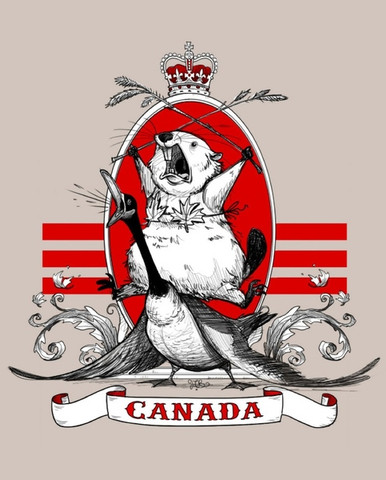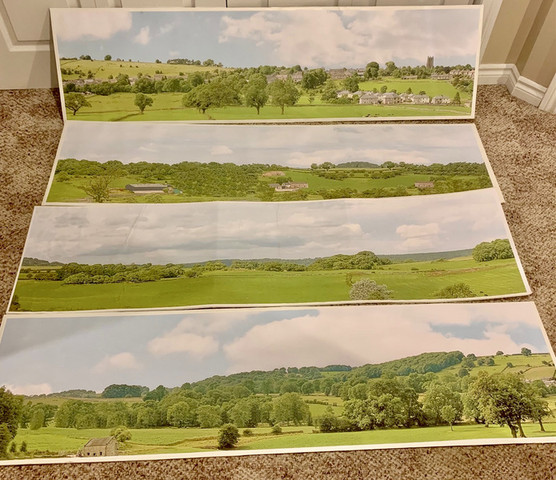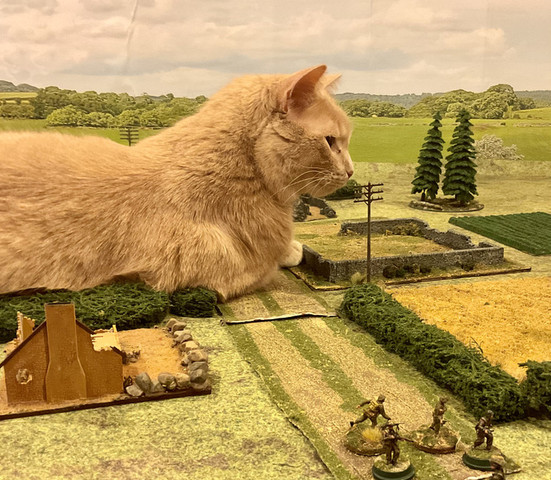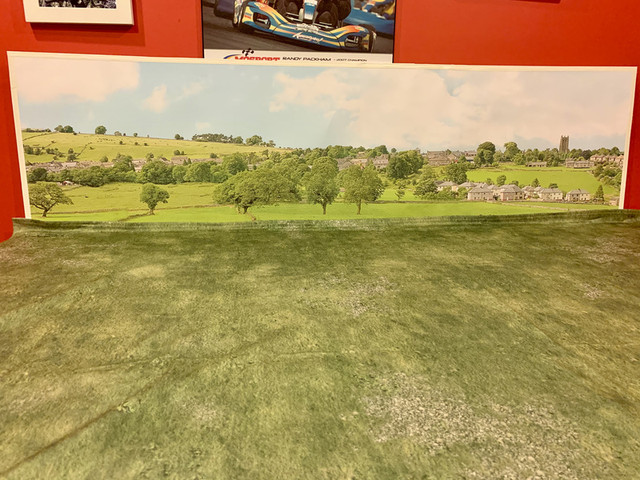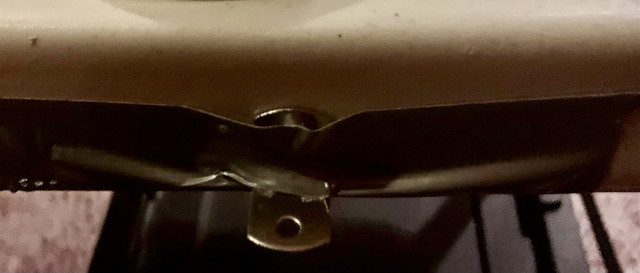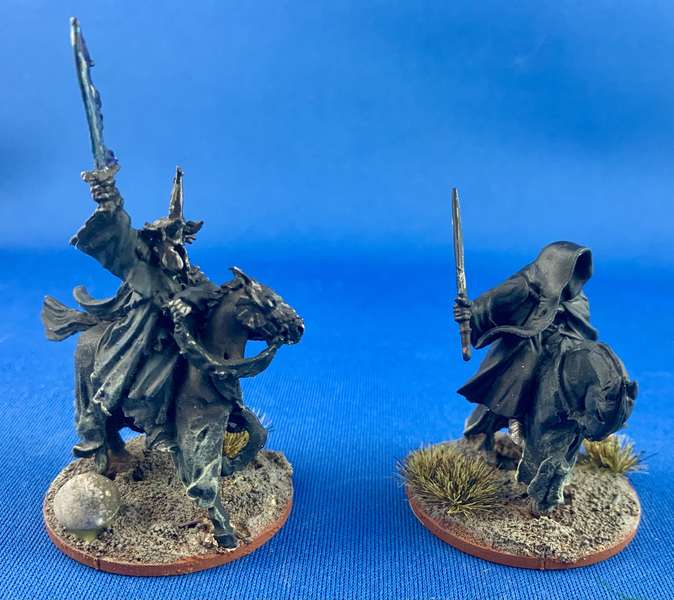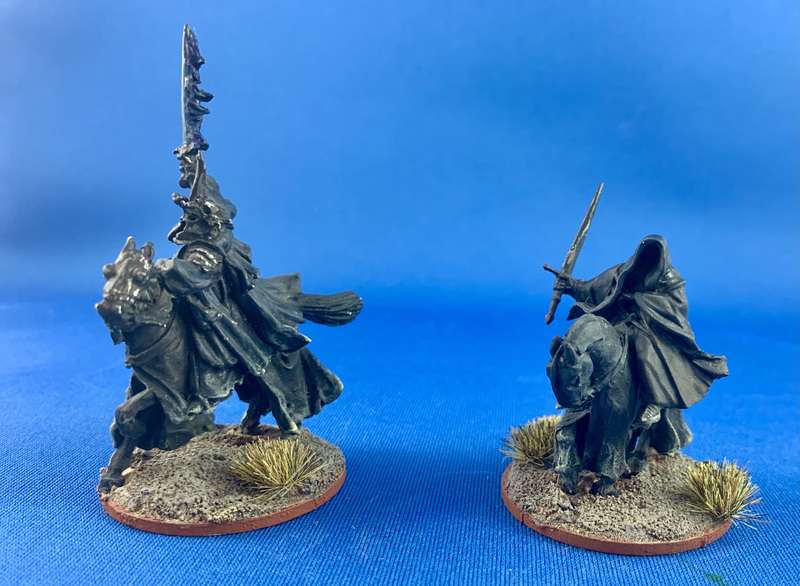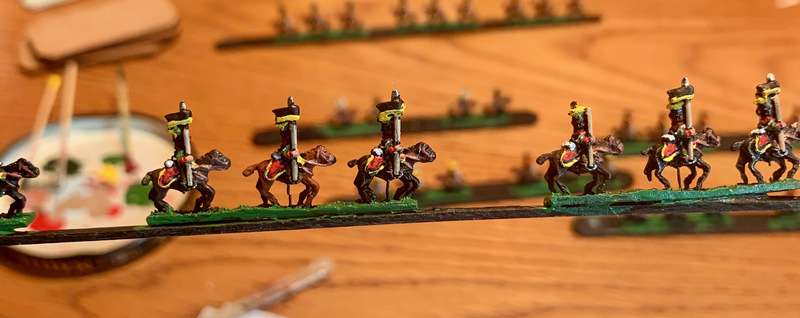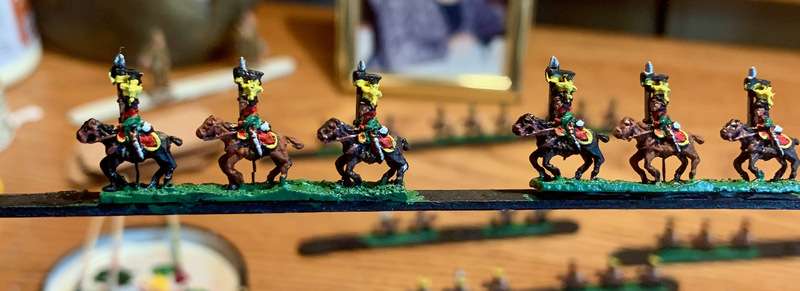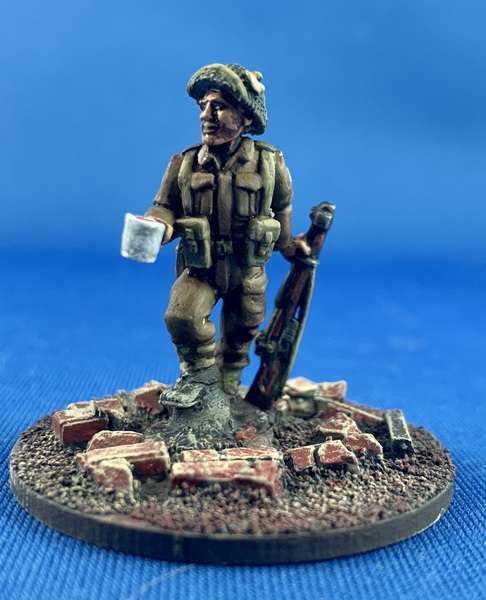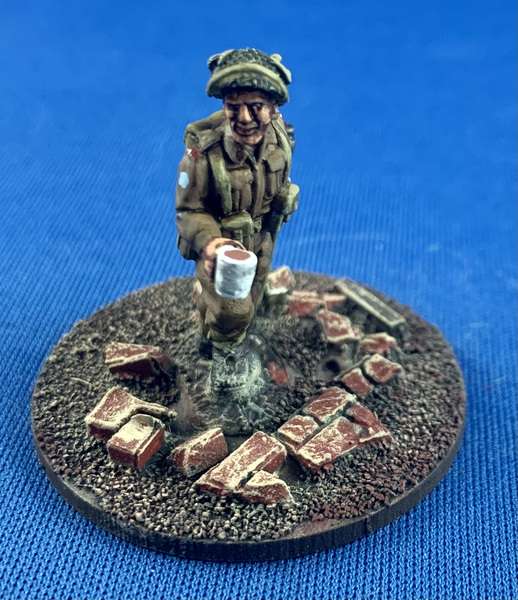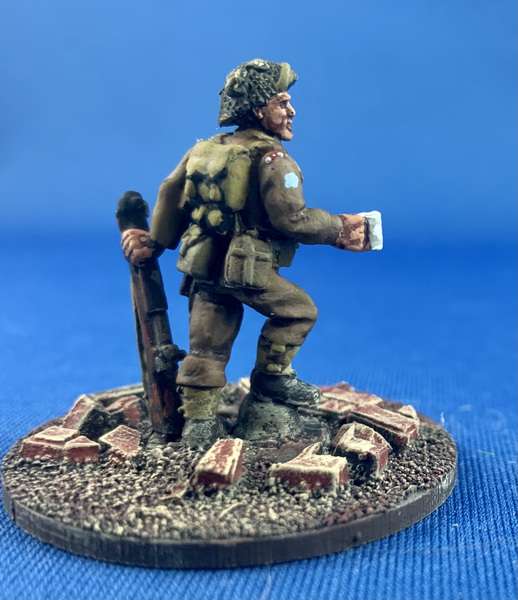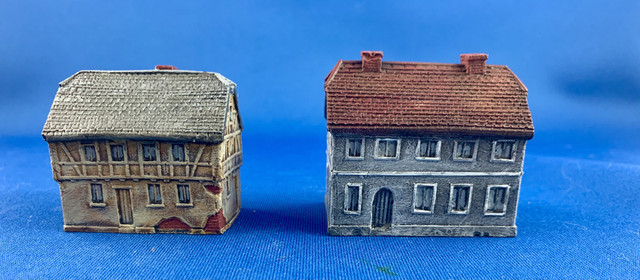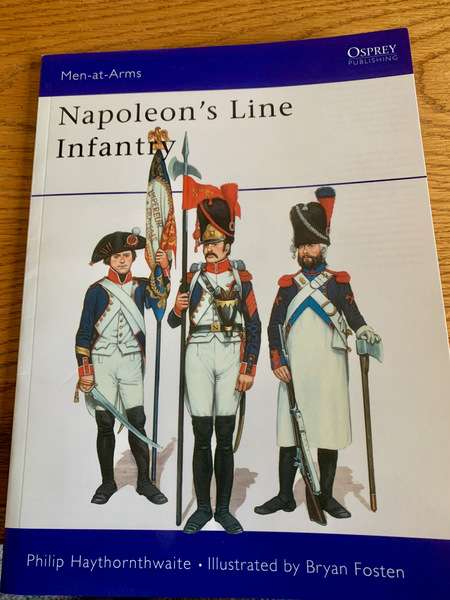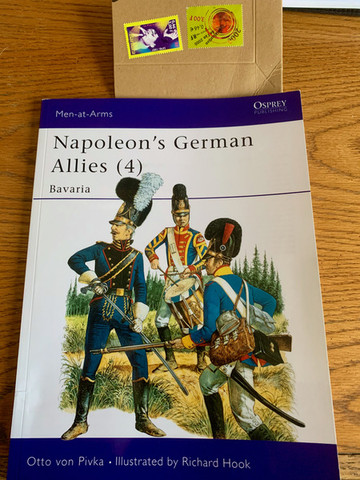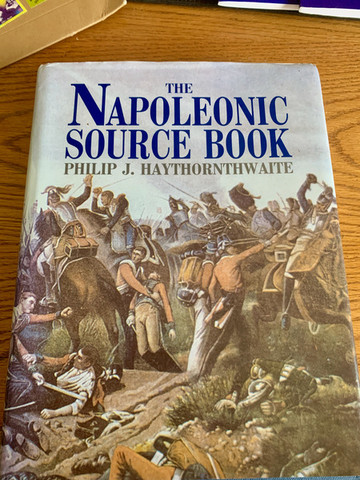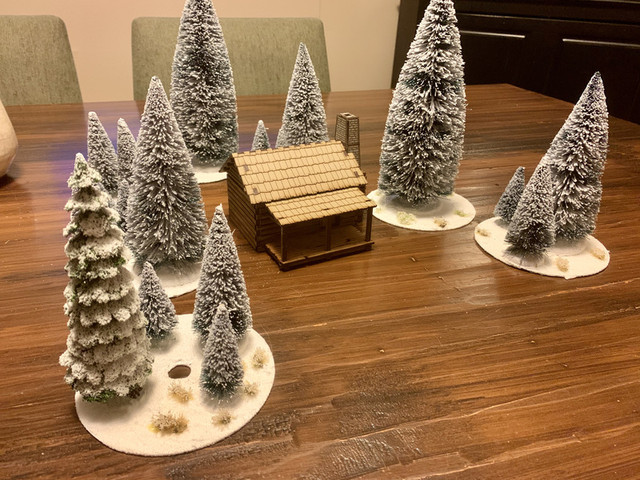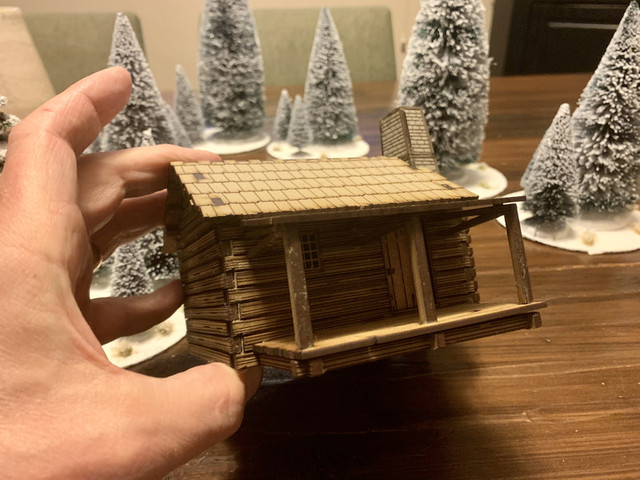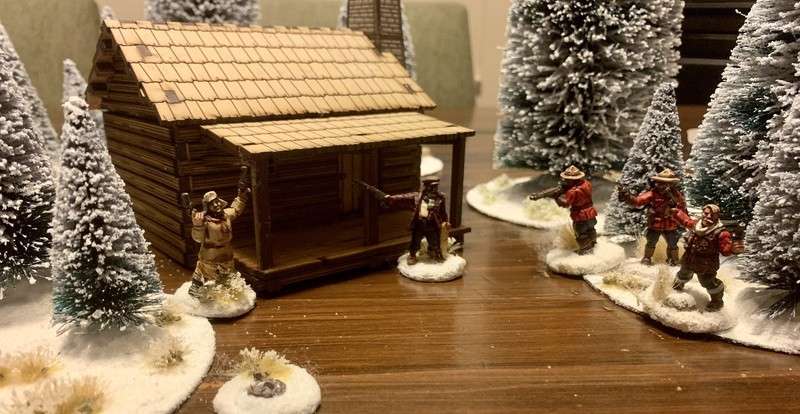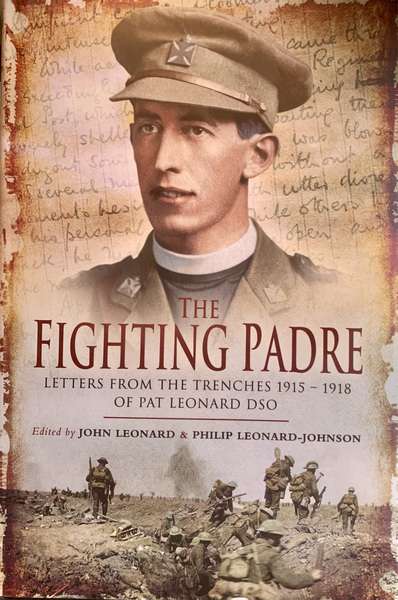Towards the end of April I described here my intention to try and game the American Civil War battle of Seven Pines (1862), the battle fought within earshot of Richmond and which marked the high water mark of US General George McClellan’s advance up the Peninsula. I’ve now fought the first phase of the battle, the initial attack by D.H. Hill’s division, and will offer a brief play by play for those interested in battle narratives, and will end with some thoughts on how this scenario could be better tweaked as the first in a series of linked engagements.
The rules used are Dave Brown’s Pickett’s Charge (Reisswitz Press/Too Fat Lardies). Having just finished a fight using Dave’s General d’Armee Napoleonic rules, I found it relatively easy to try his ACW rules for the second time, as the mechanics are quite similar.
The scenario assumes that the Union picket line has already been driven in, as happened historically. The fight begins with Garland’s brigade running into the furthest formed unit, the 103rd Pennsylvania of Wessel’s brigade of Casey’s Division. Why the green 103rd had been pushed so far forward, on the far side of the Union’s abatis defences, is a bit of a mystery, but they do their job, stopping the initial charge of two rebel regiments.
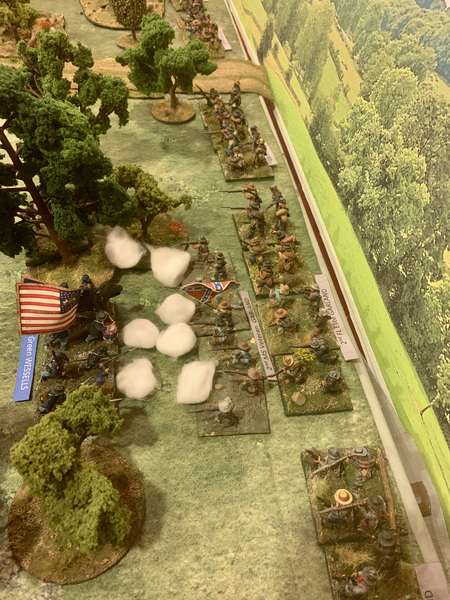
1st NY Light Battery, stationed between Palmer’s and Naglee’s brigade, has a line of sight on one of Garland’s regiments and draws first blood for the Union. There were two other batteries stationed further back in Casey’s main line, and the accounts say that they also fired on the advancing rebels, but given the rules and the lack of any discernible elevation on this part of the battlefield, I didn’t see how that could be simulated.
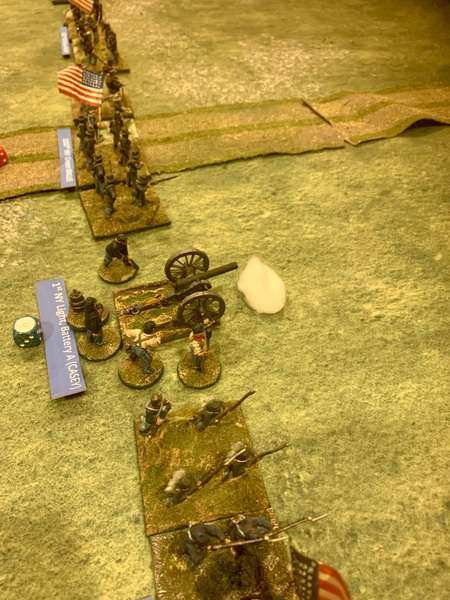
Sheer numbers make themselves felt. On Turn 2 the rebels win the initiative and Garland’s 23rd NC flank charges the green Pennsylvanians.
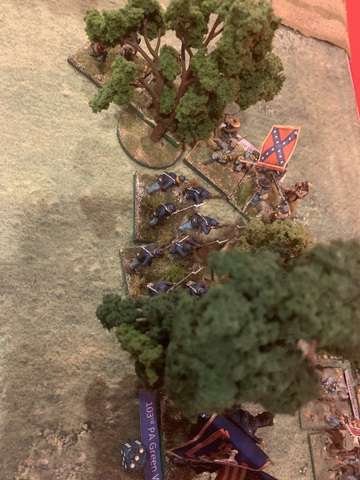
The 103rd are Whipped and fall back 18”, crossing the abatis like white tailed deer. I couldn’t resist giving them a mounted commander, as the regimental history reports that their OC, a Major Gazzam, found his horse a problem in the dense woods: “In retiring under the heavy fire of the enemy in the woods, Maj Gazzam was swept from his horse by a limb of a tree, and in the fall his head striking a log, was momentarily stunned. He remounted almost instantly and succeeded in reaching the Williamsburg Road, to find the Regiment scattered into fragments and the batteries of Casey’s artillery shelling the woods from which it had fled (16-17)"
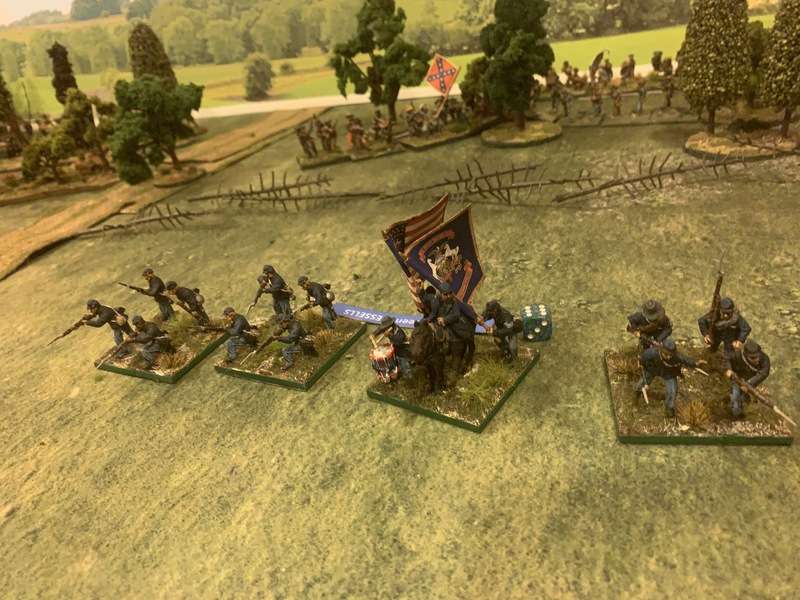
Once the rebels emerge from the woods, the tactical problem for the Union seems to be: How best to employ the four green infantry regiments and one battery stationed in advance of the redoubt and fortified positions? One solution would simply be to concede this part of the battle altogether and fall back behind the redoubt. However, Casey had no idea how many rebels he was facing or how much time he had to buy. It’s also quite possible that the sight of their peers falling back with rebels on their heels might have panicked his green division. So it seems like the best thing for the Union to do here is to use the troops on the table to try and blunt the rebel advance, inflict as many casualties as possible, and buy time for the rest of the army to organizes and reinforce (see the comments on victory conditions below).
The 104th PA of Naglee’s brigade are advanced on the right to cover the withdrawal of the 103rd PA. The rest of the line braces as Garland’s brigade emerges from the woods.
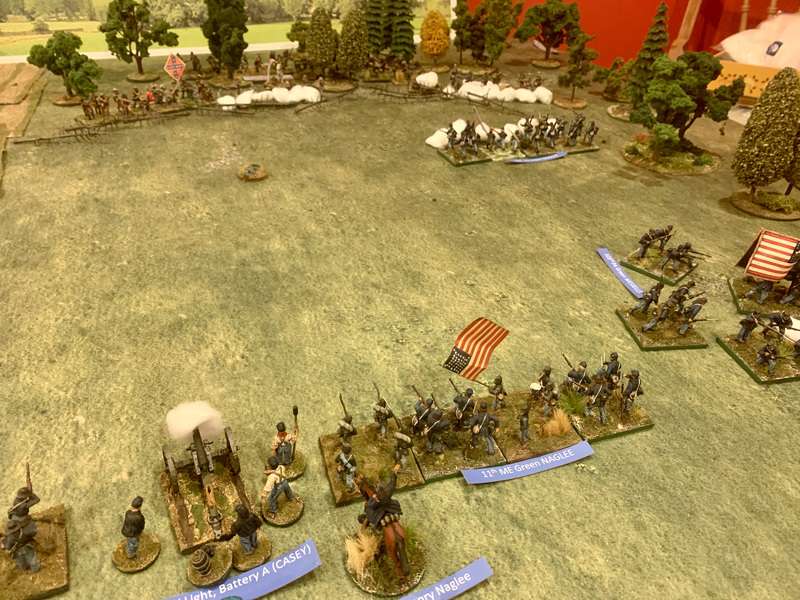
Casey direct’s Hazzam’s 104th PA to fall back behind the redoubt and reorganize. They exit the table.
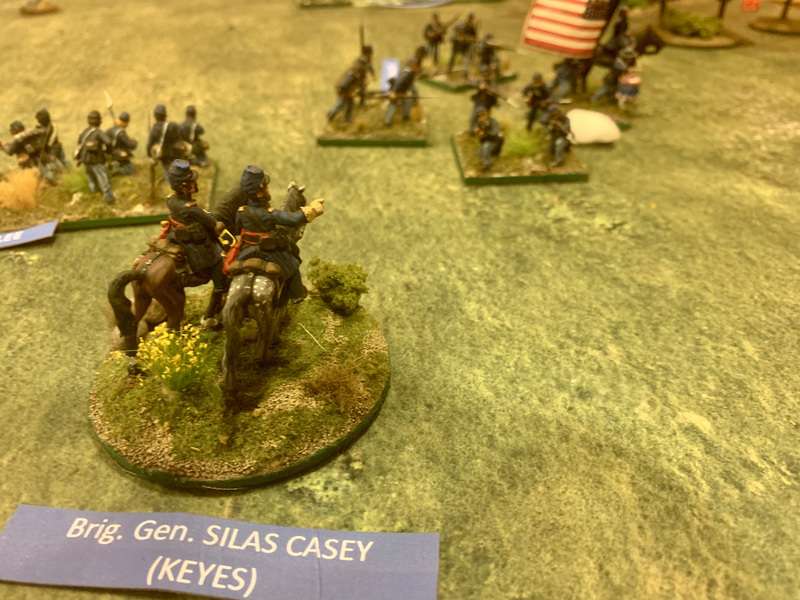
Garland’s brigade is slowly crossing the abatis, most of its regiments having to reform themselves afterwards, while Rodes’ men begin to emerge from the swampy woods.
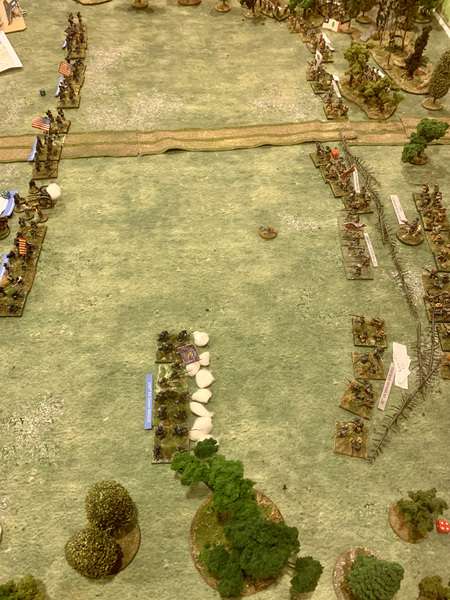
Disaster threatens as the Union artillery throws snake eyes and runs low on ammunition. They also incur a fatigue casualty for working their guns so hard (and mostly ineffectively.
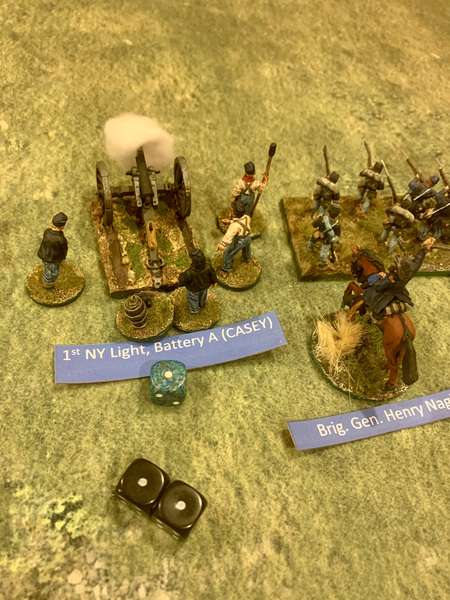
With Garland’s men pressing ever closer, Casey makes a bold move. He uses his two available staff officers to send for ammo to resupply the guns. This move has risks, because if Naglee’s brigade fails is roll to obey orders this turn, then the staff officers are wasted, but the Union is fortunate, Naglee’s brigade obeys orders and the ammo is rushed up in the nick of time.
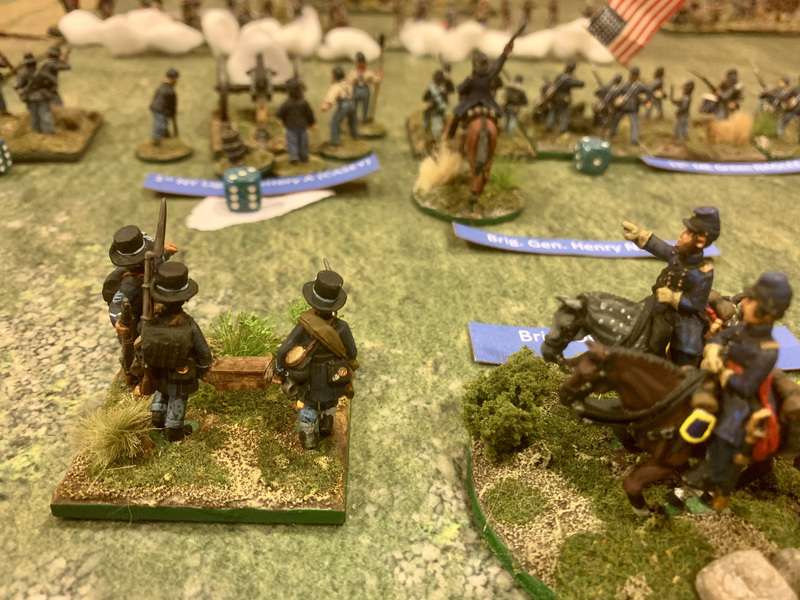
Furious firing between Naglee’s and Garland’s brigade as the 104th PA slowly retire to tie in with their comrades.
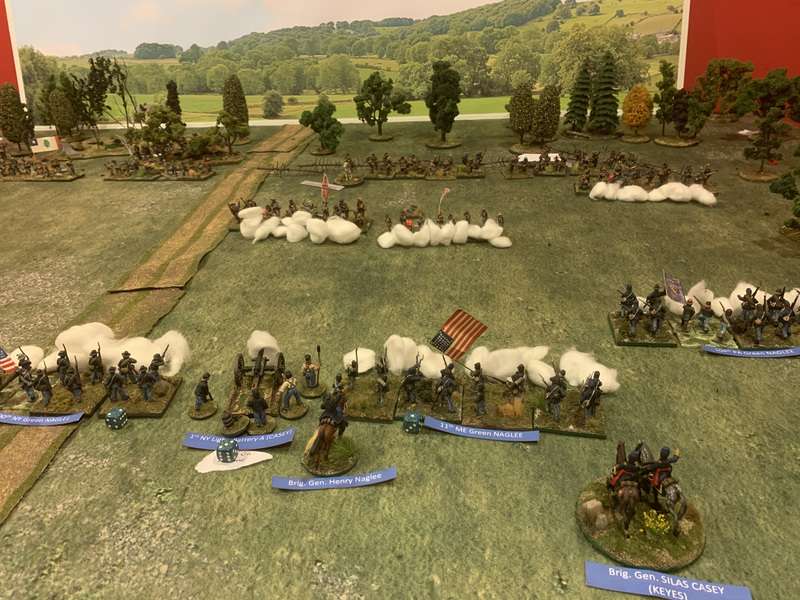
Shockingly good shooting by the resupplied New York gunners unleashes a blast of canister into the 23rd North Carolina!
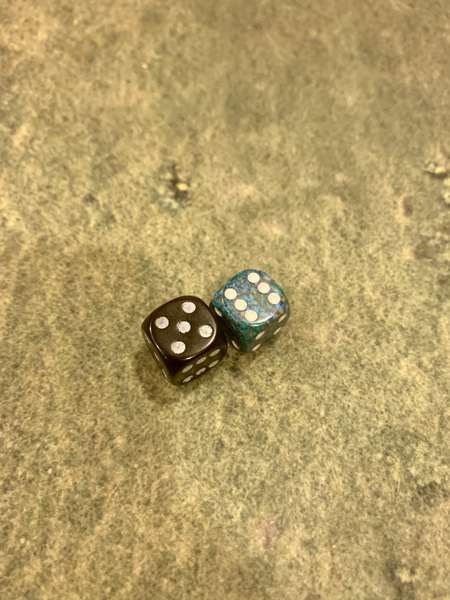
The tar heels take 5(!) casualties, fail their Elephant Test, and fall back Whipped, bursting though and un-forming the 2nd FL behind them.
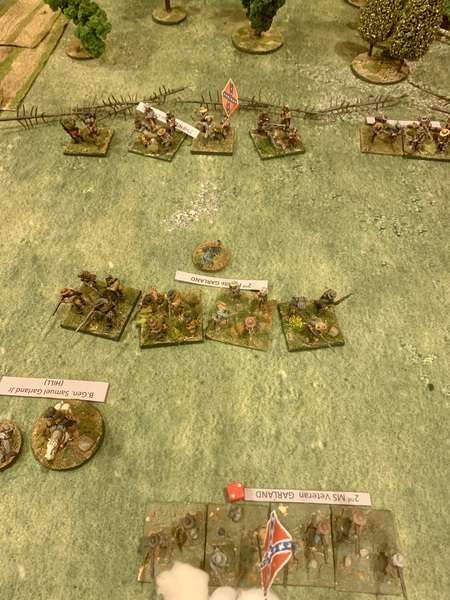
Union now has the initiative. With Rodes’ brigade hesitating and still emerging from the woods, General Casey sees an opportunity. If he doesn’t take it, it’s just a matter of time before the Confederates tee up multiple supported charges and then his green boys are done. “Charge them, by God!” is his order to BGen Naglee.
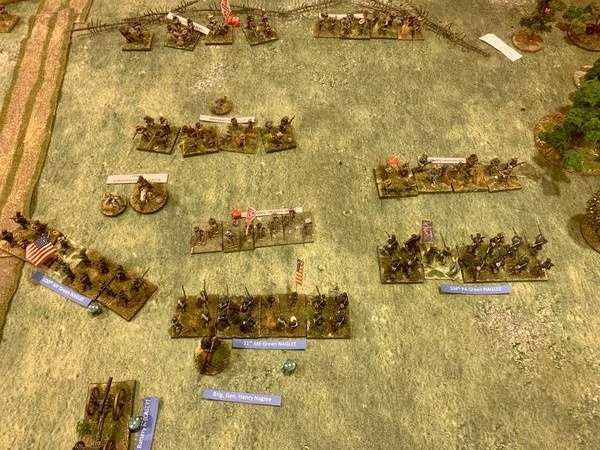
On the right, the 104th PA takes only light casualties from the 34th VA, so the charge goes home, but the Virginians hold steady and after a brief tussle the Keystone State boys grimly retire.
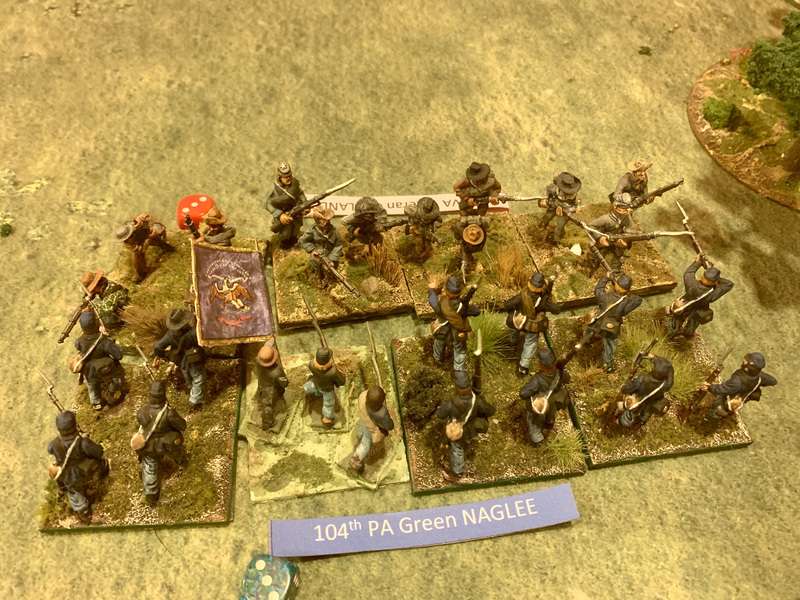
Unfortunately the 11th Maine take hits from the 2nd MS and flunk their Elephant Test. Even with their Brigadier attached, they are Whipped and fall back like geese. Their flank supports, the 100th NY, have no choice to retire and Garland can breathe easier. The New York gunners are grateful that the mayhem is enough to cover their limbering and falling back to new firing positions. It was a bold move by the Union and could have caused significant confusion and delay to Garland, so no regrets in ordering the charges.
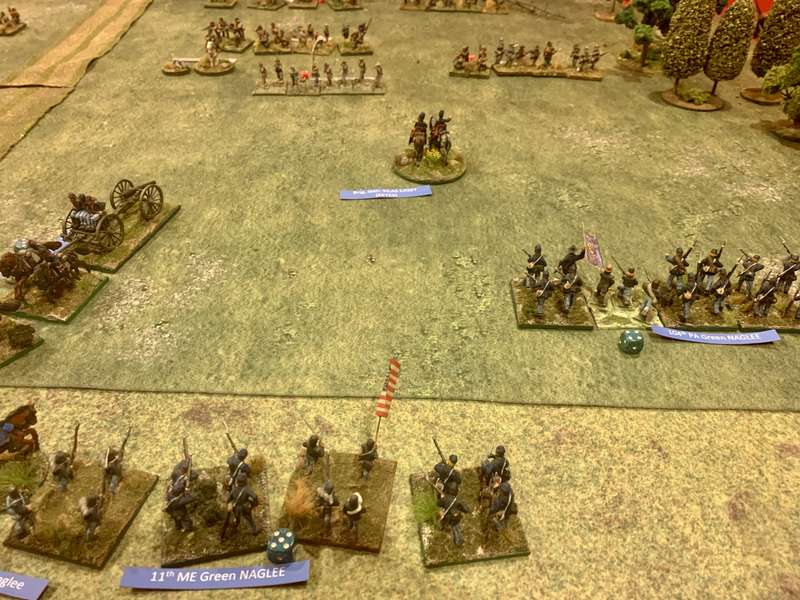
On the Union left, Palmer’s two New York regiments watch nervously as Rodes’ brigade slowly sorts itself out.
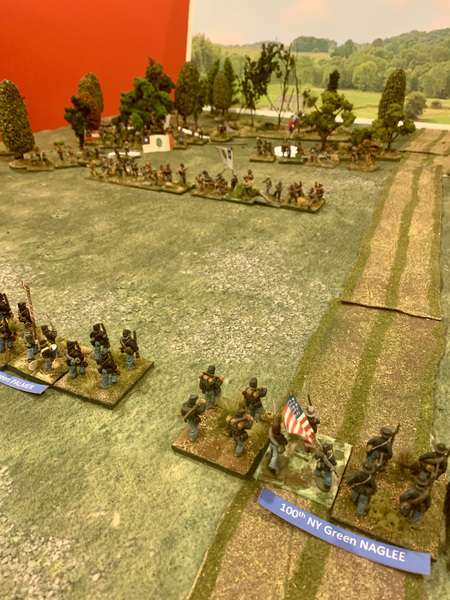
Both Confederate brigades are now in motion with volleys being exchanged as they come. Casey buys the time to steady the 11th ME while the New York Light Btty moves behind the reforming 100th NY to support Palmer.
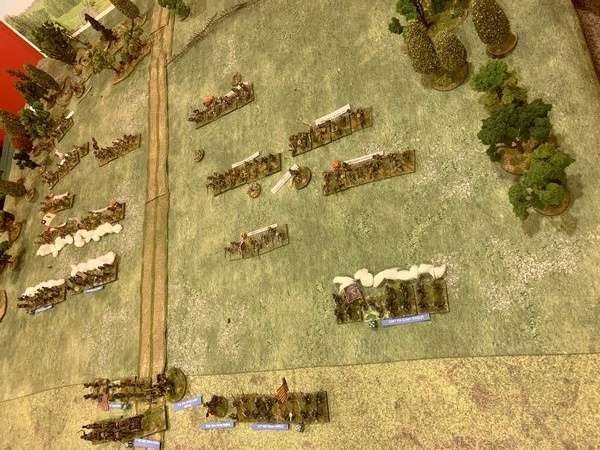
Palmer’s green boys are smelling the powder now. Mild casualties on both sides. Rodes is itching to charge. He knows Hill is somewhere behind him, bringing up the rest of the division, and that he will expect results.
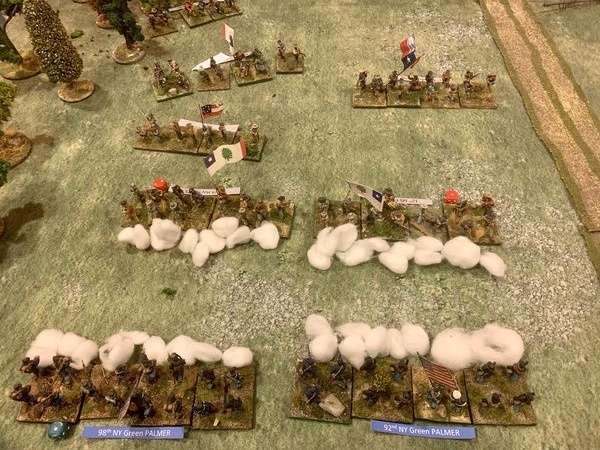
Rodes throws three regiments forward. The 12th MS (unsupported) charges the 92nd NY while the 4th VA, supported by an Alabama regiment, charge the 98th NY. The results were interesting. The 92nd unleashed a blistering volley which staggered the 12th MS, and then easily bested them in the charge rolls, thus sending the Missippians Whipped backwards, while the 98th NY’s defensive fire was risibly ineffective, and they fled the field as the Virginians howled in with the rebel yell. Moral of the story in these rules: NEVER CHARGE UNSUPPORTED IF YOU CAN HELP IT. TAKE THE TIME TO TEE UP YOU SUPPORTS BEFORE COMMITTING.
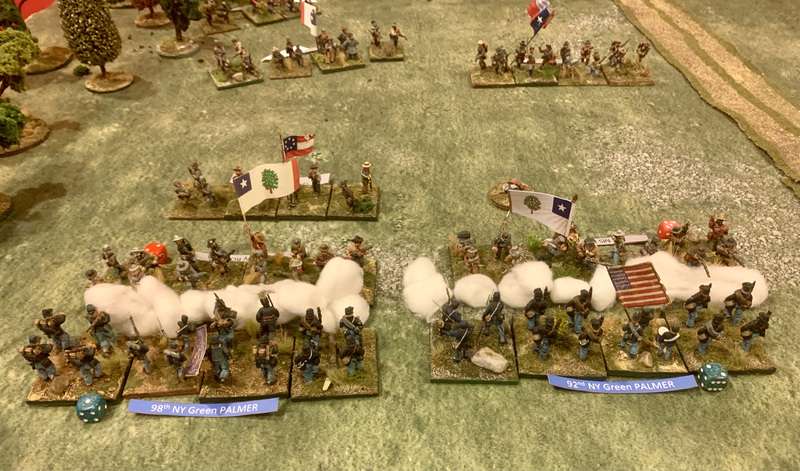
An awkward silence as the 4th VA looks left and the 92nd NY looks right.
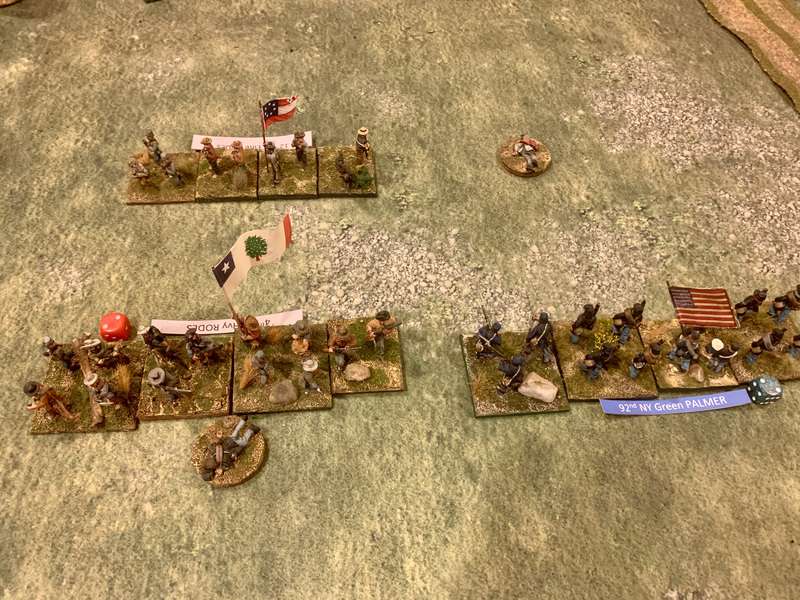
Meanwhile on the rebel left, Garland personally joins the 38th VA, who, supported by the 24th VA (ignore the Texas flag in the photo) hurl themselves on the 104th PA, with BGen Naglee himself directing them. Who will win?
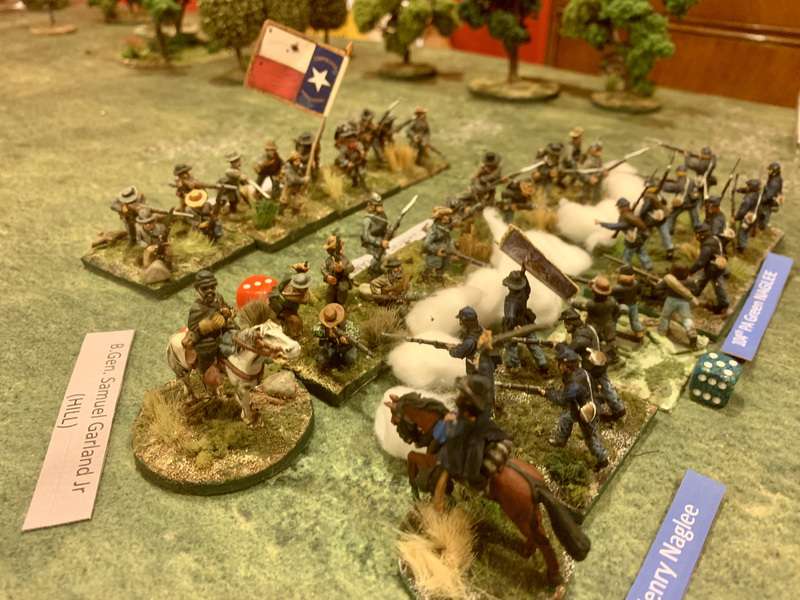
Even Luigi the Cat appears and watches this fight. The result is shocking. The green Pennsylvanians stand and force both regiments of Garland’s Virginians to retire! Shockingly bad dice rolls by the rebels that the one dice Support re-roll could not substantially improve.
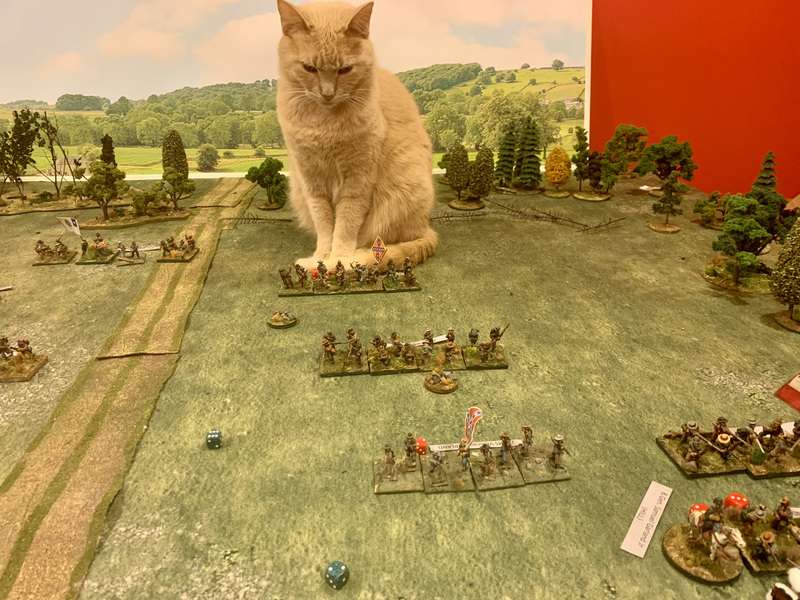
On the Union left, another astonishing coup for the New York Light Artillery. Having unlimbered, they do they bit to support the heroic 92nd NY, unleashing a round of canister and rolling a 12(!) on 2d6! That’s five casualties for one of Rodes’ best regiments, the Elite 12th MS, and that’s a Serendipity roll, meaning that the regiment’s colonel is killed and the unit automatically Retires 18”.
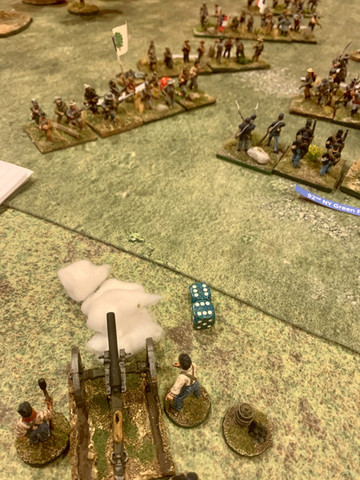
Sadly though, the superior numbers of Hill’s Division make themselves felt. Because a unit involved in a charge which fires defensively can neither move nor shoot during the rest of the turn, the uncommitted 2nd MS wheels and fires a deadly volley into the flank of the gallant 104th PA, sending them Whipped from the table, busting through the 11th ME behind them and disordering them.
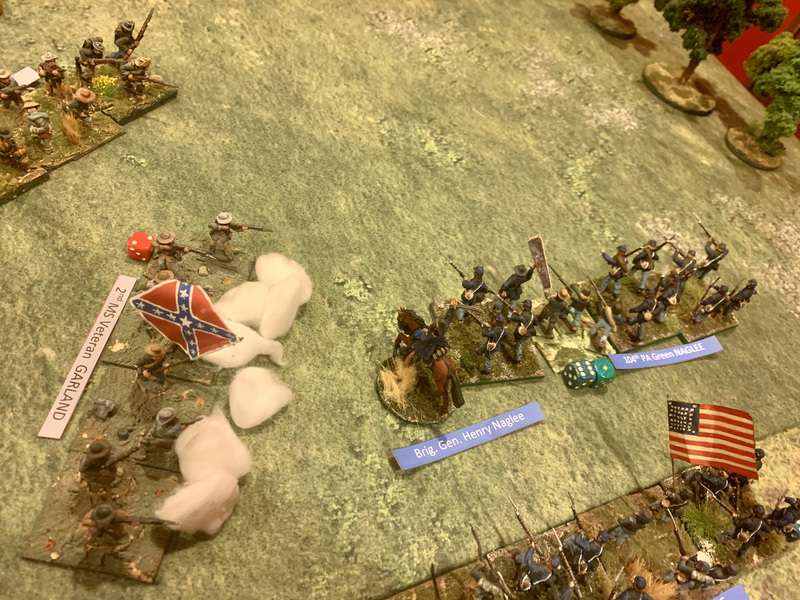
In the following turn, the 12th MS, supported by the 2nd FL, charge the un-formed 11th ME and send them Whipped off the table as well. Casey sees that enough is enough, and voluntarily withdraws the 100th NY and the NY Light Artillery. The poor 92nd NY catches a heavy volley as they try to withdraw and are also sent Whipped off the table.
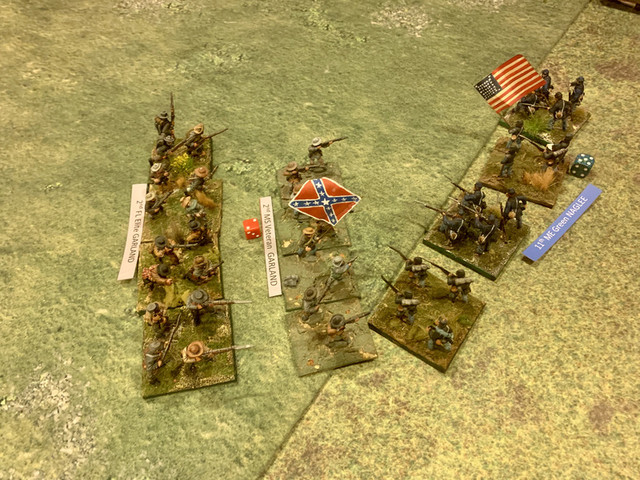
Final Confederate positions.
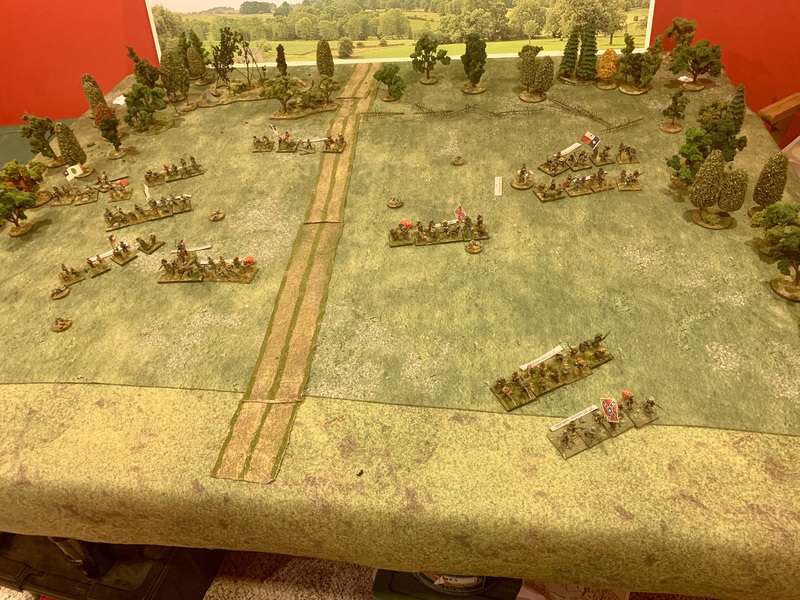
CONCLUSIONS AND SCENARIO OBSERVATIONS
1) I continue to enjoy these rules. As mentioned above, I was reminded that unsupported charges should be avoided, even if the differences in troop quality is stark. A green unit can do significant damage with its defensive fire, generating a high hurdle in negative modifiers that one roll of the Charge Dice might not clear, which is when you you need a supporting unit, or preferably two, for those re-rolls. Is a regimental-scale set of rules right for a battle like this, which could be fought at smaller scales at brigade (15mm) or even divisional (6mm) scale? Depends on how much you like the actions of individual units. I enjoy a regimental level battle narrative, and it allows me to become attached to a unit like the star of this game, the 1st NY Light Arty, which redeemed itself with new ammo and HAMMERED the rebs thereafter.
2) Staff Officers. I only gave both sides two SOs, the rationale being that the Confederate army at Seven Pines was woefully bad at coordinating, and Hill’s division was separated by the terrible terrain, so Garland and Rodes are basically fighting their own battle. Maybe when Hill arrives on the table in the second scenario, he might add a third SO. The Union only get two because only two of Casey’s brigades are present (Wessell, apart from the 103rd PA, was off in the woods to the right) and in any case it was one of the weakest divisions in the Union Army, all green, and probably not an effective staff at this point in the war. Two SOs for both sides seems about right.
3) Victory Conditions. I should have been tracking the number of turns this battle took. I suspect it was at least ten. I think you want to give the Union an incentive to stand and fight, and so I would suggest giving the Union 1 VP a turn for every turn after the sixth (or perhaps 8th?) turn where there are still at least two formed Union regiments on the table. That also gives the Confederate player an incentive to be aggressive and drive hard on the Union. Casualties are also a factor, as in this game the Union lost 41 casualties while the Confederates lost 31. However, all the Union units are Green whereas most of the Confederate units are Veteran and a few are Elite. Thus, perhaps award the Union 1 VP for every 5 CSA casualties are the CSA 1 VP for every 10 CSA casualties? Something like that. Also maybe give the CSA .5 VP for every Union unit that is Dispersed (dissolves because of excess casualties) and the Union 1 VP for every CSA Veteran unit dispersed and 2 VP for every CSA Elite unit dispersed.
Based on these VP totals, I would say that based on the casualty totals and the time it took for the rebs to clear the table, the Union won this round of the battle.
4) Where Do We Go From Here?
The battle accounts agree that a significant number of Union troops piled up behind the redoubt and the twin houses as skulkers, and had to be rounded up and reorganized. I would therefore think that any Union unit that exits the table Whipped in this scenario is not immediately available in the second scenario. Perhaps a die roll every turn to see if it can be rallied, with whatever casualty levels it had when leaving the table, or even a bit worse.
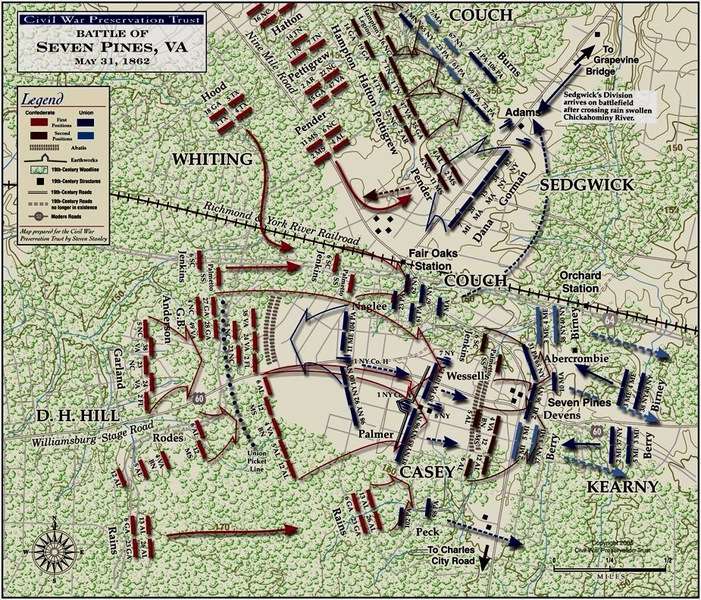
The table for Scenario Two should have the Union fortifications (above) in the centre of the the table, with the twin houses just behind them. The Confederates will enter from their table edge, with each CSA unit at the casualty levels it incurred in the first scenario. From the very first turn, the Union artillery will be able to fire, as it is finally unmasked as the Union first line is pushed back.
Rodes and Garland’s brigades will need to assault and clear the Union positions, with the hope at some point (perhaps after six turns) that Rains’ brigade will complete is movement and flank the Yanks out of their positions (perhaps this would entail Hill sending his staff officers in search of Rains). Also the CSA will have the benefit of two batteries of artillery (Bondourant’s and Carter’s).
Eventually the third phase of the battle will be the action at Seven Pines, with elements of Couch’s (Keyes Corps) and Kearney’s (Heintzelman’s corps) divisions arriving to counterattack and throw back the rebs.
Unit Standing at the End of Scenario One showing casualties in brackets and W for Whipped Union unit:
Rodes: 6th AL (1), 12th AL (0), 5th NC (0), 4th VA (7), 12th MS (7)
Garland: 23rd NC (7), 2nd MS (3), 2nd FL (0), 38th VA (6), 24h VA (0)
Palmer: 98th NY (4), 92nd NY (7W)
Naglee: 104th PA (7W), 11th ME (7W), 100th NY (3)
Wessels: 103rd PA (10W)
1st NY Buy A (3)
Thanks very kindly if you read this far and if you have any thoughts on how this scenario might be improved, please do let me know. I have some printed fortifications on order, and once they are received and painted, I will try the second scenario. In the meantime, thanks for reading and blessings to your battles. MP+
